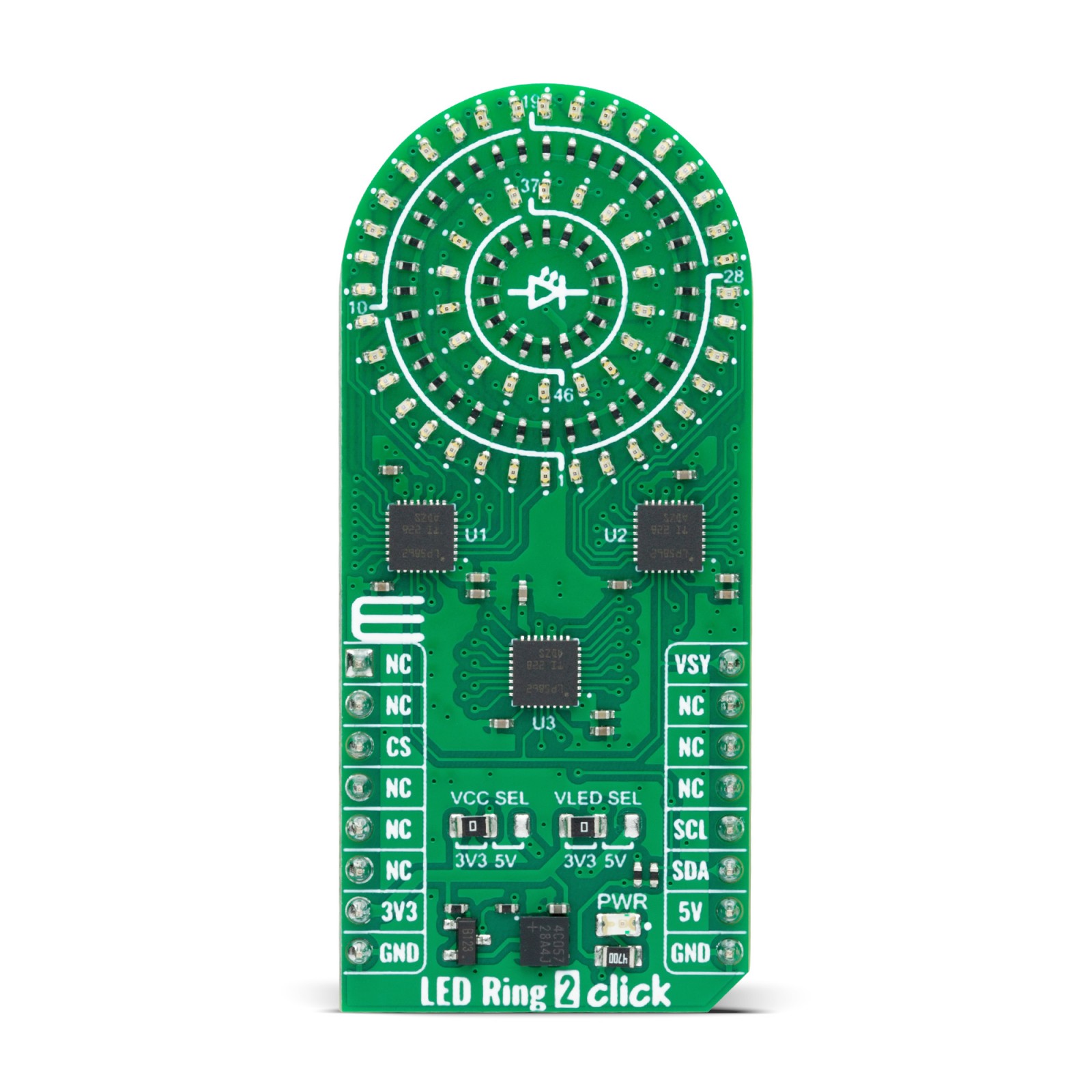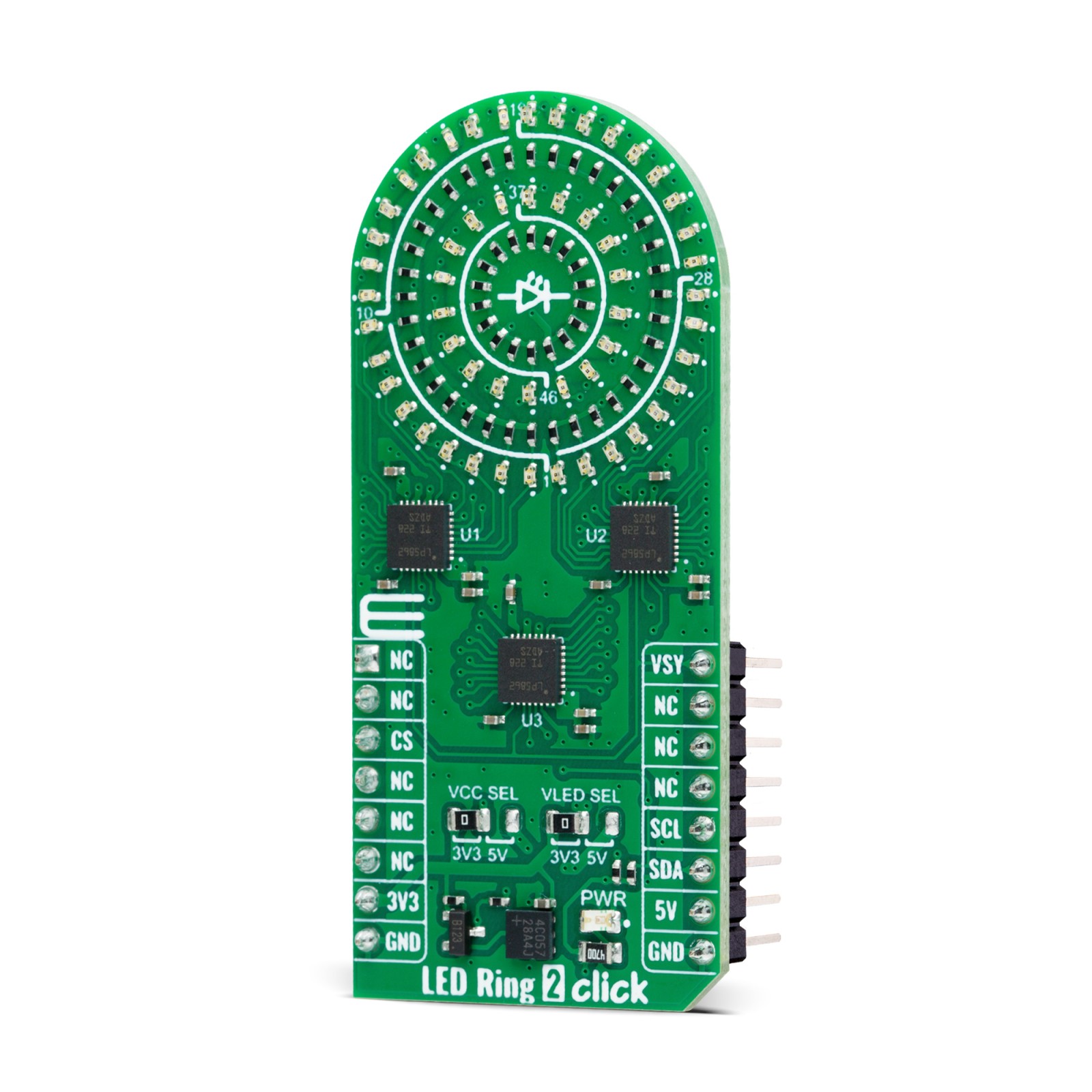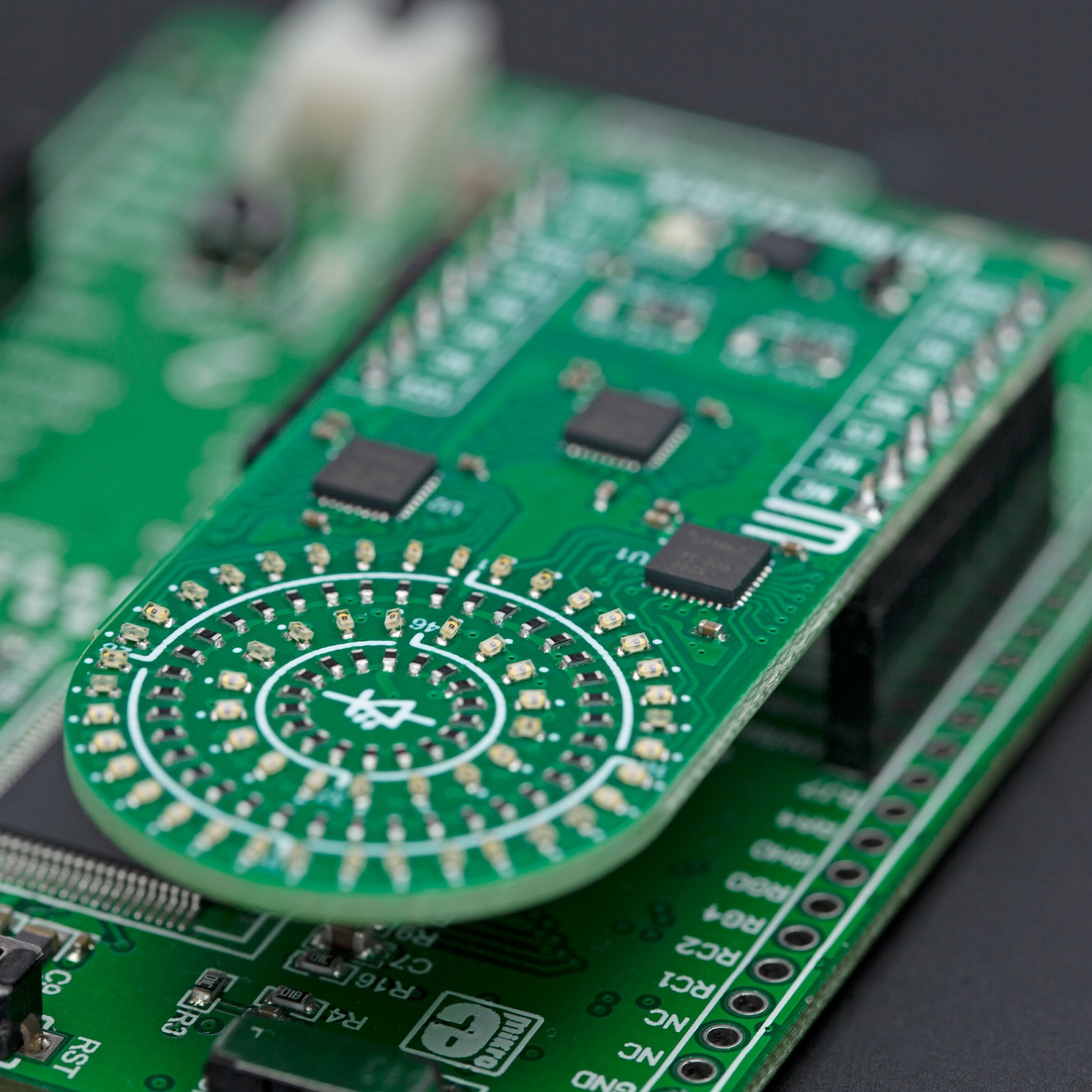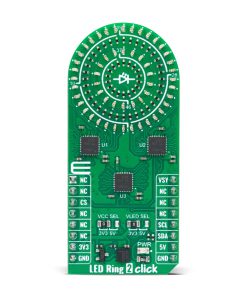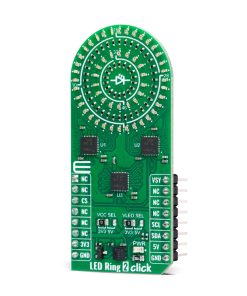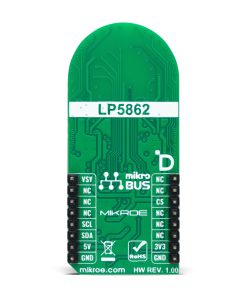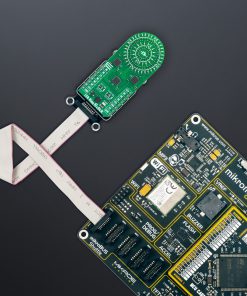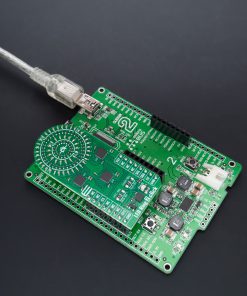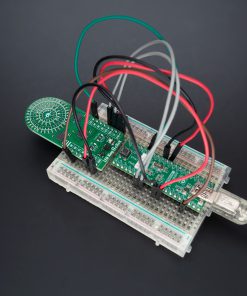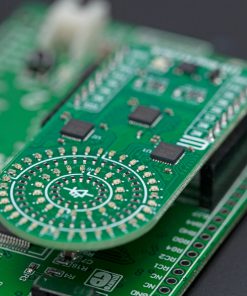Subtotal: R1,050.00
LED Ring 2 Click
R970.00 ex. VAT
LED Ring 2 Click is a compact add-on board that provides a circular-shaped electronic lighting solution. This board features three I2C-configurable high-performance LED matrix drivers, the LP5862 from Texas Instruments. The LP5862 integrates 18 constant current sinks for driving 18 yellow LEDs. With the help of two additional LP5862 drivers, it is possible to realize, as shown on this board, a solution of 54 yellow LEDs arranged in a circular pattern. In addition, it also provides excellent PWM dimming effects. This Click board™ is suitable for animation and indication purposes for amusement products, LED status signalization, home automation projects, and many more.
LED Ring 2 Click is fully compatible with the mikroBUS™ socket and can be used on any host system supporting the mikroBUS™ standard. It comes with the mikroSDK open-source libraries, offering unparalleled flexibility for evaluation and customization. What sets this Click board™ apart is the groundbreaking ClickID feature, enabling your host system to seamlessly and automatically detect and identify this add-on board.
Stock: Lead-time applicable.
| 5+ | R921.50 |
| 10+ | R873.00 |
| 15+ | R824.50 |
| 20+ | R793.46 |

 GSM Click
GSM Click 